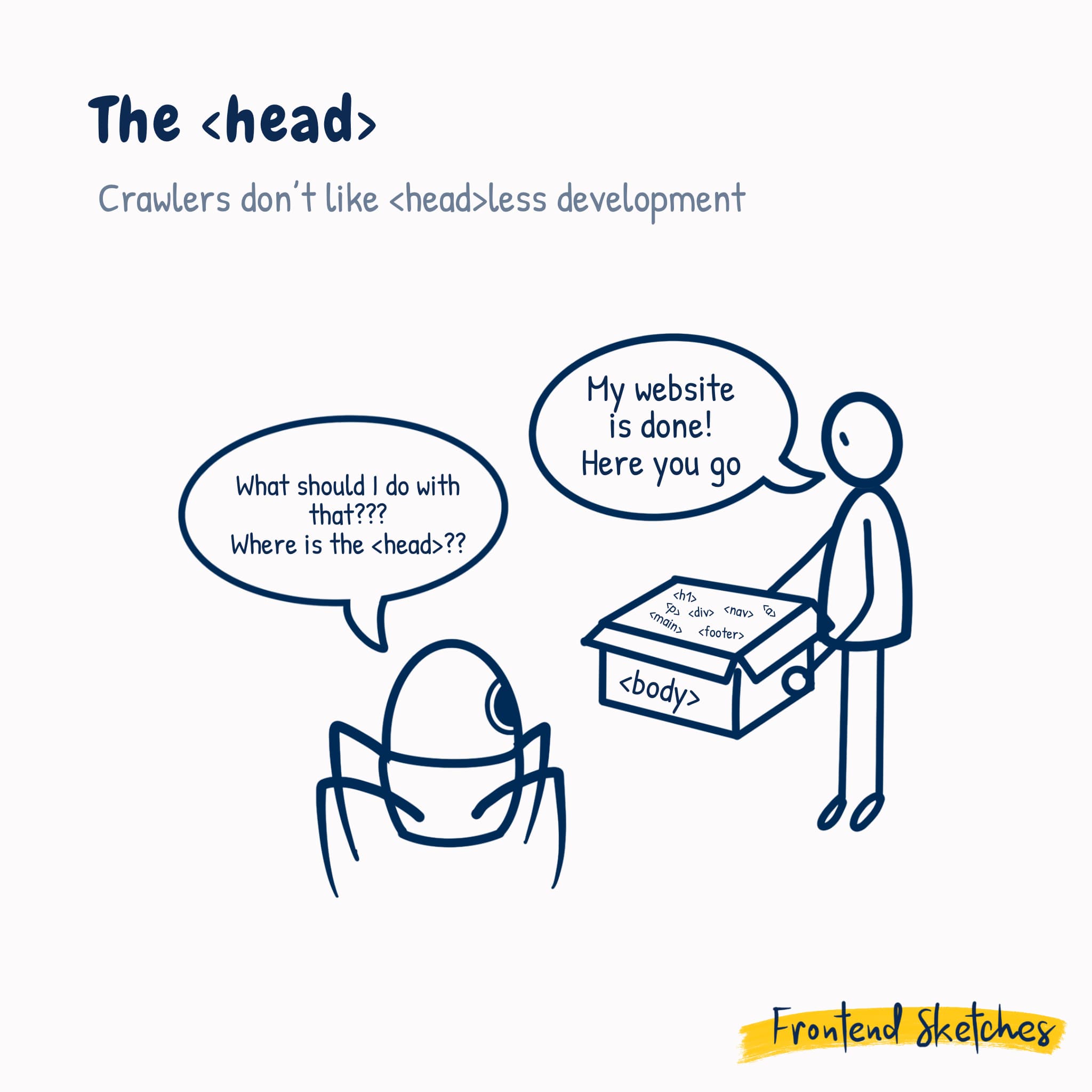
Welcome friends 👋
The first half of the year went by so quickly! This month I want to talk about the <head> element. It's such an invisible part of a website, yet it's quite important and powerful.
If we use the most minimal tags, we need to define our charset, viewport and title within the <head>. But there are so many things you can set in the head, that will influence your SEO and performance. There are actually 8 elements that are valid in the head: meta, link, title, style, script, noscript, and base.